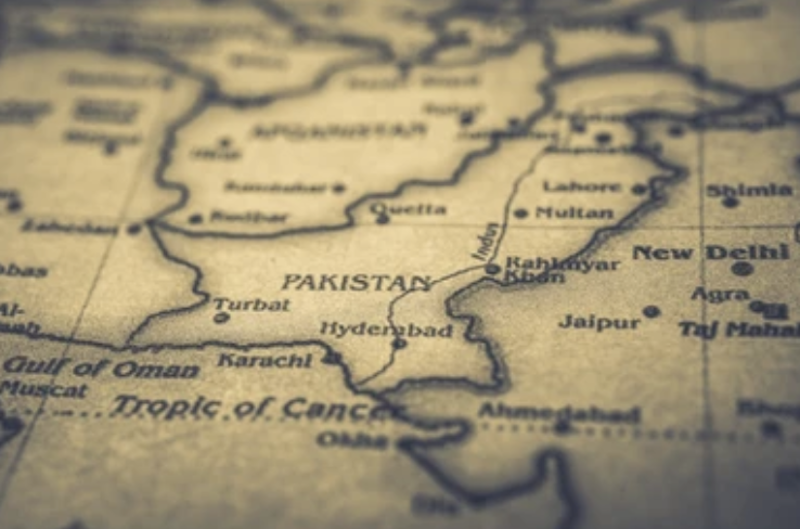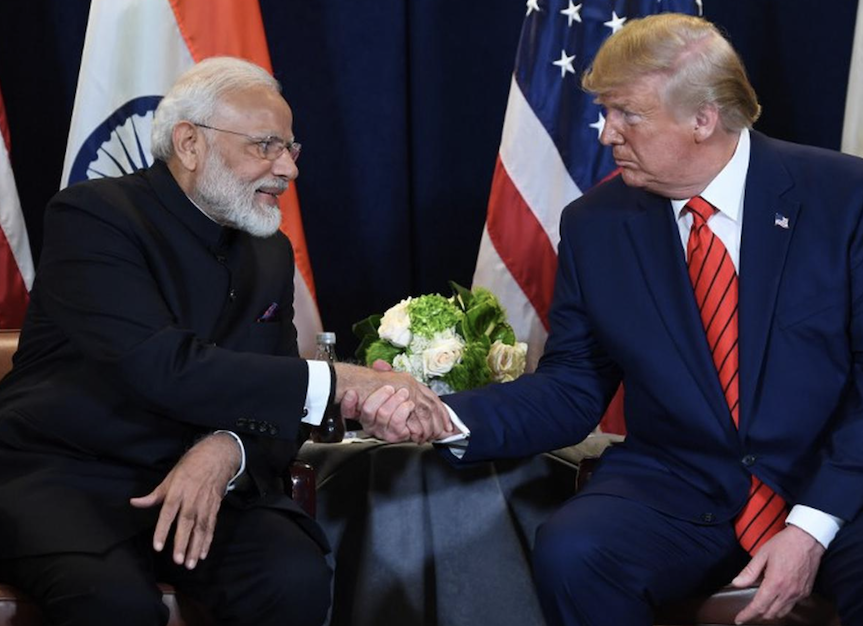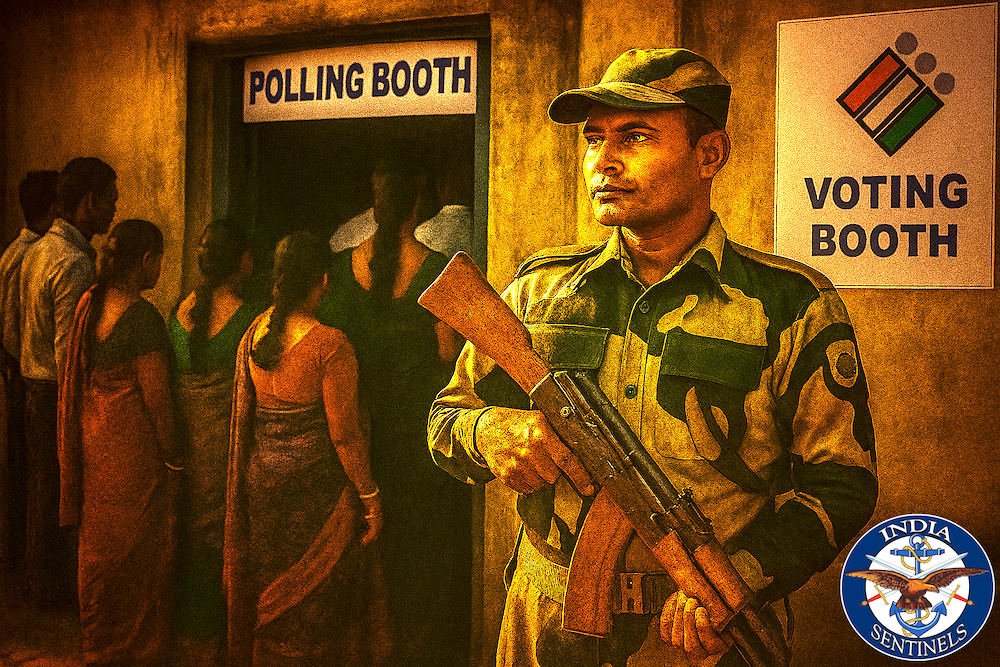
India confronts Pakistan as a hostile adversary along its 3,323-kilometre western front. This frontier encompasses various states as security stakeholders, bearing the brunt of cross-border terrorism and drug-induced social upheaval. These states include the Union territory of Jammu & Kashmir in the north, with Punjab, Rajasthan, and Gujarat to the south, in descending order. The southwestern part also includes the Arabian Sea along the coast of Gujarat and Maharashtra, which has been exploited for the export of terrorism and drugs.
In India, cross-border terrorism has persisted since the early 1980s, engulfing the state of Punjab and the Union territory of Jammu & Kashmir. This terrorism has not remained limited to the geographical boundaries of these two states but has impacted contiguous lands and different parts of India. Its devastating impact was also seen in Maharashtra through the exploitation of the maritime boundary, as evidenced by the 26/11 Mumbai attacks.
Read also: Robust HUMINT network is the key to defeat militancy in Jammu & Kashmir
It is imperative to note that terrorism and militancy in Punjab and Jammu & Kashmir have psychologically indoctrinated youth not only in these two regions but also in other parts of the country, fanning radicalism. Pakistani-sponsored terrorism, tinged with religious indoctrination, has brought about a misplaced feeling of glamour, pride, and sense of accomplishment among youth.
This has acted as motivation for them to join terrorist ranks without realizing that such airy dreams bring destruction and are short-lived with a temporary shelf life.
To further compound the issue, this indoctrination is now being exploited by anti-India elements ensconced in safe havens abroad, especially in the United States, Canada, Australia, and the United Kingdom. And although militancy in the Kashmir valley is on the decline and has almost dried up, it has engulfed areas south of the Pir Panjal range, comprising the Jammu region.
Read also: Bangladesh crisis – India’s security challenges, strategy to tackle them
Unfortunately, Pakistan-sponsored cross-border insurgency through terrorism and militancy in India has not received the desired world attention it deserves, despite the huge and severe human, psychological, and material attrition it has caused. Except for occasional military crises that crop up following terrorist strikes aided by Pakistan, which garners short-lived world attention on the dangers of a military conflict between two nuclear neighbours, the world seems to be immune to the scourge of terrorism that India has faced from Pakistan for the last four and a half decades.
An important factor to note is that Pakistani society and state are fully subsumed in radicalization and terrorism internally. On the Durand Line, with the Afghan Taliban’s return to power in Kabul, turbulence has intensified in the Pashtun areas. The Tehrik-e-Taliban Pakistan (TTP) is pushing for the establishment of autonomous zones along the Durand Line inside Pakistan, undermining the control and writ of Pakistan over those areas. The Pashtun Tahafuz Movement (PTM) is vigorously fighting for its own cause and agenda.
Read also: Spike in J&K militant attacks – Time to reanalyse and restrategize
However, all these violent internal upheavals have not deterred Pakistan from cross-border terrorism, despite it being politically unstable and economically broken.
The visit of the foreign minister, S Jaishankar, the first Pakistan trip by any Indian foreign minister in a decade, for the SCO summit in Islamabad, is a positive development. Optimists hope for the start of bilateral dialogue between New Delhi and Islamabad. However, considering the present nadir state of relations on the Radcliffe Line and the terror structure and infrastructure raised by Pakistan to foment trouble in Jammu & Kashmir, not much is expected to emerge. This is despite both sides avoiding blaming each other directly at the SCO meeting, because raising bilateral issues are forbidden in the forum.
The relationship is further strained with Pakistan undermining Indian sovereignty by allowing passage of the China-Pakistan Economic Corridor (CPEC) through the Gilgit-Baltistan region, which is Indian territory under Pakistan’s illegal occupation. Nonetheless, Jaishankar did remind Pakistan and China that nations need to be firm in countering three evils, and if activities across borders are characterized by terrorism, extremism, and separatism, they are hardly likely to encourage trade, energy flows, connectivity, and people-to-people exchanges. Pakistan needs to respond positively.
Read also: Manipur needs immediate central intervention to restore order
Since Pakistan-sponsored terrorism has continued despite borders being fenced and heavily fortified, what are the options to fight Pakistan’s proxy war?
India needs to discuss and analyse multiple options instead of solely relying upon the security apparatus to fight terrorism. There is a need to exploit multi-pronged options to fight terrorism.
Firstly, despite the fact that the western border is heavily fortified, it still needs strengthening and operational dynamism. This strengthening should involve the induction of additional boots on the ground to reduce the area of responsibility for better observation, surveillance, and domination. Domination tactics and patterns need to enthuse interest and enthusiasm while breaking monotony and staleness.
Read also: India-Myanmar Border – Build fence, strengthen free-movement regime
They must not be fence-centric, which sets in a defensive mindset, attitude, and approach among commanders and troops, wherein the fence unintentionally becomes the border. The area ahead of the fence practically remains unguarded except for occasional forays there and surveillance through towers and technological innovations.
There is a need to get rid of the defensive mindset and inculcate aggressiveness in attitude and approach by compulsory forward deployment, which will accrue a host of operational benefits. Forward deployment needs institutionalization through considered decisions at the macro level.
Secondly, India should engage with Pakistan bilaterally and promote people-to-people contact. Although past experiences of bilateral engagement have not been successful, since the Pakistan establishment thrives and survives on Kashmir rhetoric, the solution is to adopt an unconventional approach: engagement with the Pakistan Army. The Pakistan Army is termed as the deep state within the Pakistan establishment since it controls the whole problematic structure of the relationship. The civilian government has little manoeuvring space and acquires legitimacy from the army.
Read also: National security and India-US convergence
Therefore, India needs to adopt an unconventional approach and authorize military-to-military engagement. This may achieve what bureaucratic and political engagement have failed to achieve.
A case in point is the ceasefire agreement brokered between the directors general of military operations (DGMOs) of both countries, effective from the midnight of February 24-25, 2021. The ceasefire agreement has generally been successful, except for occasional localized cross-border firing incidents resorted to by the Pakistani forces. If the military can ensure a successful ceasefire agreement, certainly military-to-military engagement may put a lid on cross-border terrorism. The need is to authorize unconventional methodology, keeping politicians out of it.
Thirdly, an important factor is to checkmate Pakistan on cross-border terrorism by actively engaging with the Afghan Taliban government. India needs to push Pakistan out of the Afghan political space by encouraging the Afghan regime to aggressively work for achieving its political aims along the Durand Line. This will further create more instability and turbulence on Pakistan’s western borders, compelling it to take its eyes off the eastern borders with India.
Read also: Restrategizing anti-Naxalite ops is key to end Maoist insurgency
The Taliban connection must concurrently accompany aggressive engagement with the people of Pakistan-occupied Kashmir (POK), who have been subjugated and practically enslaved with no fundamental or human rights. They live under alien control, longing for political and economic freedom and – to a large extent – integration with India.
New Delhi needs to unhesitatingly and aggressively support them morally and materially to organize an “Arab Spring”-type uprising in POK. This unprecedented action will likely force the Pakistan establishment to agree to recognize the line of control (LoC) as the de jure border between the two countries.
By keeping Pakistan and its security apparatus, especially its army and the Inter-Services Intelligence (ISI) occupied along the country’s Afghanistan border in its west and in occupied Kashmir, India may achieve its primary objective of peace and tranquillity all along its western borders.
Read also: Bringing Jammu & Kashmir out of the quagmire of militancy
It is never enough to reiterate that India needs to exploit all plausible options to tame and force Pakistan to shed its policy of bleeding India through cross-border terrorism and radicalization of youth in our country, and force it to negotiate the border dispute with India from a position of strength on India’s terms.
Now is the right time to do so; the ball is in the Indian government’s court. It needs to bite the bullet.
Disclaimer: The views expressed in the article are the author’s own and don’t necessarily reflect the views of India Sentinels.
Follow us on social media for quick updates, new photos, videos, and more.
X: https://x.com/indiasentinels
Facebook: https://facebook.com/indiasentinels
Instagram: https://instagram.com/indiasentinels
YouTube: https://youtube.com/indiasentinels
© India Sentinels 2024-25










